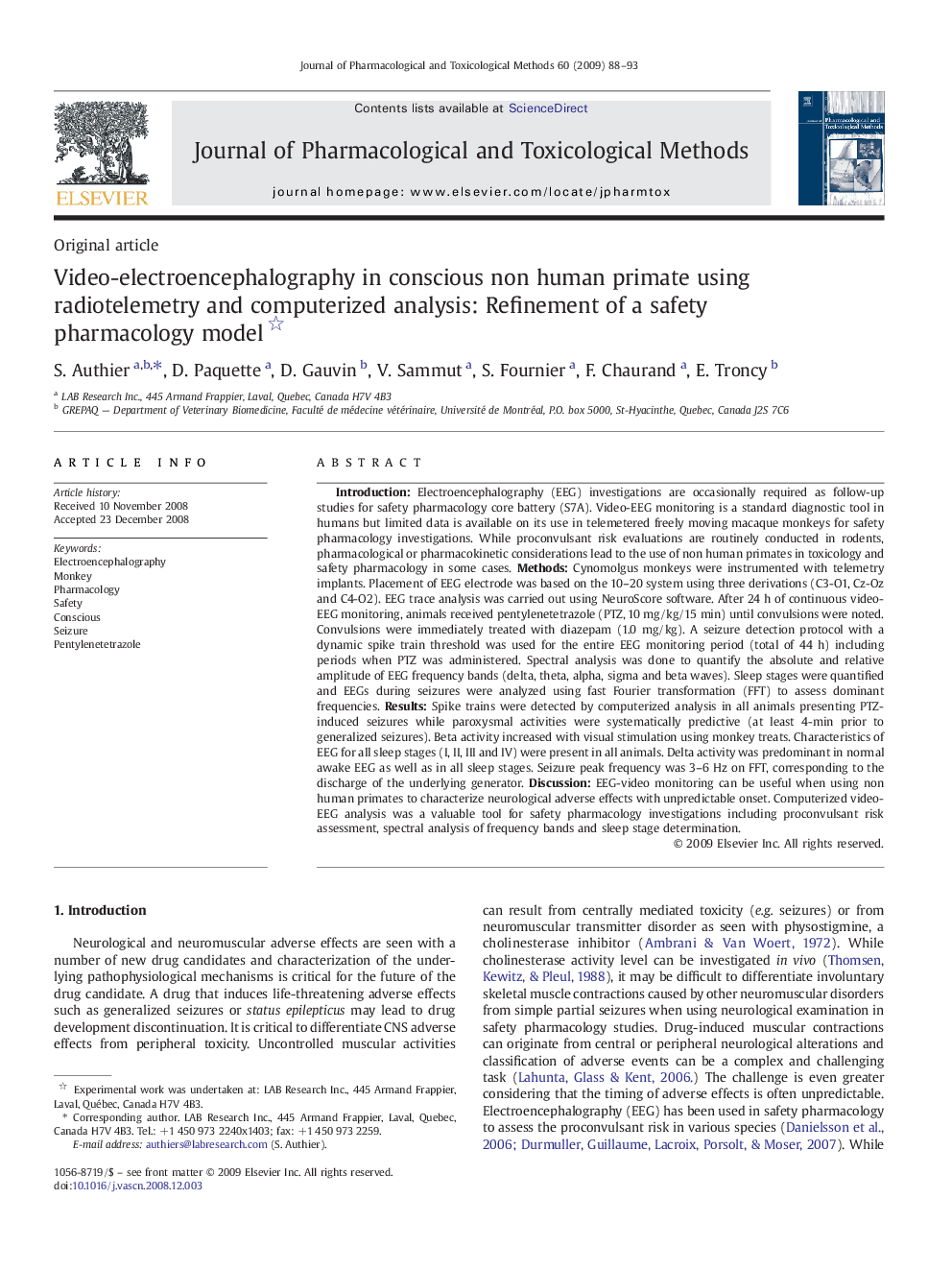| کد مقاله | کد نشریه | سال انتشار | مقاله انگلیسی | نسخه تمام متن |
|---|---|---|---|---|
| 2549983 | 1124535 | 2009 | 6 صفحه PDF | دانلود رایگان |

IntroductionElectroencephalography (EEG) investigations are occasionally required as follow-up studies for safety pharmacology core battery (S7A). Video-EEG monitoring is a standard diagnostic tool in humans but limited data is available on its use in telemetered freely moving macaque monkeys for safety pharmacology investigations. While proconvulsant risk evaluations are routinely conducted in rodents, pharmacological or pharmacokinetic considerations lead to the use of non human primates in toxicology and safety pharmacology in some cases.MethodsCynomolgus monkeys were instrumented with telemetry implants. Placement of EEG electrode was based on the 10–20 system using three derivations (C3-O1, Cz-Oz and C4-O2). EEG trace analysis was carried out using NeuroScore software. After 24 h of continuous video-EEG monitoring, animals received pentylenetetrazole (PTZ, 10 mg/kg/15 min) until convulsions were noted. Convulsions were immediately treated with diazepam (1.0 mg/kg). A seizure detection protocol with a dynamic spike train threshold was used for the entire EEG monitoring period (total of 44 h) including periods when PTZ was administered. Spectral analysis was done to quantify the absolute and relative amplitude of EEG frequency bands (delta, theta, alpha, sigma and beta waves). Sleep stages were quantified and EEGs during seizures were analyzed using fast Fourier transformation (FFT) to assess dominant frequencies.ResultsSpike trains were detected by computerized analysis in all animals presenting PTZ-induced seizures while paroxysmal activities were systematically predictive (at least 4-min prior to generalized seizures). Beta activity increased with visual stimulation using monkey treats. Characteristics of EEG for all sleep stages (I, II, III and IV) were present in all animals. Delta activity was predominant in normal awake EEG as well as in all sleep stages. Seizure peak frequency was 3–6 Hz on FFT, corresponding to the discharge of the underlying generator.DiscussionEEG-video monitoring can be useful when using non human primates to characterize neurological adverse effects with unpredictable onset. Computerized video-EEG analysis was a valuable tool for safety pharmacology investigations including proconvulsant risk assessment, spectral analysis of frequency bands and sleep stage determination.
Journal: Journal of Pharmacological and Toxicological Methods - Volume 60, Issue 1, July–August 2009, Pages 88–93